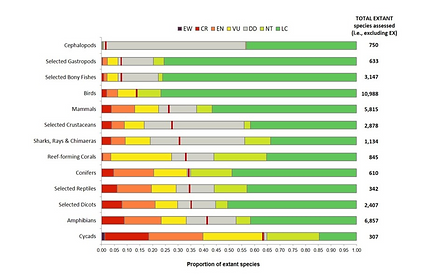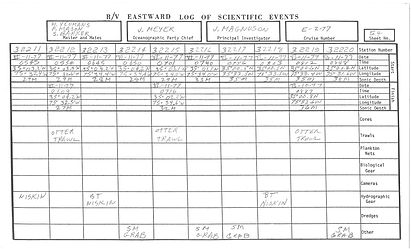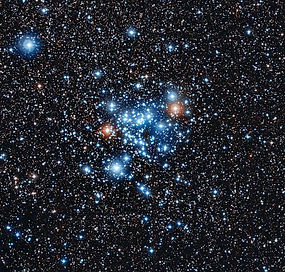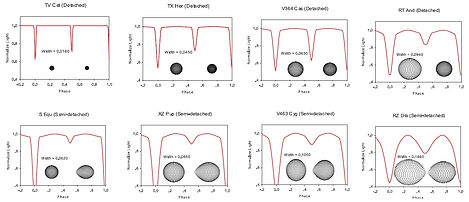The History of Environmental Conservation


On April 22, 1970, New Yok Governor Nelson Rockefeller signed legislation that created the Department of Environmental Conservation in the state. The DEC works to combat pollutants, flood protection, air quality, and the preservation of wilderness. April 22, 1970 also marks the first Earth Day.

Following the rise in interest and concern surrounding environmental conservation, the public began efforts to push the government to pass more legislation protecting the environment. This image shows protestors outside of the White House demanding for more clean energy rather than environmental budget cuts in 2011.
Throughout the Second Industrial Revolution, the burning of coal and other fossil fuels as energy for factories significantly contributed to the harming of the ozone layer and emissions of fossil fuels into our atmosphere. This image depicts smokestacks in Pennsylvania in the 1890s, showing the massive amounts of pollutants released during this time.

Due to the contributions of fossil fuels in the 19th and 20th centuries as well as the significant amount of emissions by transportation, the air quality in New York City is known to be very bad at times, especially in the summer. This image shows Manhattan on a day with poor air quality in 2019.

As the world moves away from using resources such as coal, oil, and gas, clean energy companies such as Iberdrola move towards creating objects such as wind turbines and solar panels to get energy sustainably. This image is of a solar panel field in Wuzhong, China.

The Countdown Clock showing how much time we have left before it becomes too late to slow down global warming went on display in Manhattan, N.Y. On the One Union Square building, spectators can see the clock ticking down, sparking a surge in conservation efforts.
. . .
7:103:15:40:07
That is how many years, days, hours, minutes, and seconds we had left on September 20th, 2020 to make a change in our ways and how we treat the earth before the effects of global warming become irreversible (Moynihan). That countdown, displayed on One Union Square South during Climate Week in late September of 2020, began an utter panic amongst people around the world, forcing us to rethink how we live, the impact our everyday lives have on the earth, and just how important it is for us to enter lives of environmental conservation in attempt to save Mother Nature before the beautiful planet we call home surpasses the 1.5°C global warming threshold.
According to William Bradford as he arrived on the Mayflower in 1620, the wildlife covering America could be described as nothing more than “hideous and desolate wilderness,” eagerly waiting to be colonized and transformed into a land of wealth and opportunity (Edmondson). Hunters, loggers, and farmers began to be known as the “pirates of the forest,” ridding land of trees and wildlife and becoming the heroes of the new world. In the late 1800s as New York rapidly industrialized, many flocked to the state to utilize canals and the rich shoreline to create massive industries such as the Robert Graves Company, the William Ulmer Brewery, and the Havemeyer & Elder refinery. Not thinking twice about the environment, mainly due to the lack of scientific knowledge and research concerning emissions and pollution at the time, people ran after the opportunity to become rich, expanding their capital and looking for the easiest way to make as much money as possible. Unfortunately, the easiest way to do so meant using harmful fossil fuels, dumping waste into waterways, and depleting natural resources. The Industrial Revolution boomed, increasing manufacturing, transportation development, and slowly creating the United States we see today.
While the majority of Americans enjoyed the prosperity and growth of the Industrial Revolution, scientists such as George Perkins Marsh and Charles Darwin introduced ideas into the harsh reality that nature is not an untouchable beast that can never be destroyed, that “human activity can inflict permanent damage on a landscape … and that changing one part of nature might change it all” (Edmondson). Over the decade following Marsh and Darwin’s publications in Man and Nature and On the Origin of Species respectively, alarms were sounded that environmental conservation became an urgent matter, sparking reforms and change that continue today to try and reverse our harmful impact on the planet.
The sudden rise in environmental conservation in New York can be credited to the development of nuclear weapons in the 1950s, natural science advancements regarding pollution, as well as images from the Apollo space program that shed light on the fragile state of the Earth (Edmondson). As more information emerged about the sources of pollution and possible impacts on humans, the public became more aware of their actions and decided something needed to be done, not only for their own health and safety, but for the safety of the planet (Department of Conservation). Under Governor Nelson Rockefeller, in 1970 the New York State Department of Environmental Conservation was created and the first steps towards conserving the state began. The first steps of the DEC were to attack industrial emissions, more specifically volatile organic compounds and mercury that were emitted by factories burning coal and other fossil fuels. By regulating emissions, the government has not only been able to clean the air, but also protect ecosystems and important water sources from being contaminated and possibly destroyed. Since the signing of the legislation creating the DEC, New York has been able to protect and preserve 1.5 million acres of open space for future generations (Department of Environmental Conservation). In addition to regulating emissions, banning hydraulic fracturing has been an extremely important act. Hydraulic fracturing – harvesting natural gas by “blasting a mixture of water, sand and chemicals deep into the earth” – has been known to pollute both the water and air despite its reputation for being a clean fuel alternative (Keegan). Although some may argue that banning fracking would eliminate the significant creation of jobs and money from both construction and long-term operations, Governor Andrew Cuomo announced the ban on fracking would not only “protect the environment and public health,” but also create new job opportunities through 76West and Southern Tier Soaring, programs designed as ways for companies to compete by building clean energy resources.
Although New York has been known for poor air quality among a number of other growing problems, the government and public have taken significant strides to slow global warming and protect the health and safety of its citizens. New York is home to more than 100 non-governmental organizations that focus on environmental protection, including the United Nations, the Institute of Ecosystem Studies, the Green Party, and the Wildlife Conservation Society. As seen by the countdown clock displayed all over in significant places such as the Gasometer in Berlin, Germany and One Union Square in Manhattan, the world has less than a decade before we’ve released too much carbon dioxide into the atmosphere for climate change to be slowed. Environmental conservation has come a long way, moving further from “strip[ping] the earth bare with little regard for the future” and closer to permanent changes that would see earth live on for many years to come.
My Experience with Service

Penguin Watch is a project that involves observing and counting the number of penguins in different locations, keeping track of penguin populations and changes in survival rates. This project is especially important as penguins are beginning to be threatened by various predators and climate change.

The IUCN Red List documents thousands of species and their status. The list analyzes not only which species are extinct, but also the extinction risk for many. Among the many different species of penguins, some have been classified as either threatened or vulnerable, making their conservation extremely urgent.

Castaway is a project designed to help digitize records. Castaway focuses on transferring the records from Dan Moore, Eastward, and Cape Hatteras, research vessels that operated between 1964 and 2013. This is one example of a shipping log completed in 1977.

The National Archives in Washington D.C. is in charge of preserving and documenting government records. The National Archive Rotunda, pictured above, is open to the public, displaying the Constitution, the Bill of Rights, and the Declaration of Independence. Many records are still on display for the public, but more and more records are beginning to be digitalized.

Variable stars, pictured above, are stars that change brightness. SuperWASP is a project aimed at creating light curves and classifying them among different types of stars, including variable stars. This project is important in understanding the universe.

Eclipsing binary stars are among the many different types of stars identified in SuperWASP. Eclipsing binary stars involve systems where two stars orbit around a common center of mass. Above is a diagram of various detached and semi-detached eclipsing binaries by Kang Young-Woon.
. . .
Growing up with a mom as a social worker in a school and attending a middle school where we were required to complete 10 hours of service learning each year, I have always felt the need to give back to my community. When I was in elementary school, a year before entering middle school, I started a small program collecting donations and purchasing Build-A-Bear stuffed animals for children in the oncology unit at the Connecticut Children’s Medical Center in Hartford, CT. Throughout middle school I would go to my mom’s work and help out in classrooms, spend hours preparing bags of food for families in need and transforming an overgrown courtyard into an outdoor learning space. In high school I would volunteer with my track team at local road races and community days where we would introduce running to younger kids in the town. For National Honor Society we would tutor underclassmen and collect food donations for the local food pantry around the holidays. I have always enjoyed service and giving back to the community in any way possible. The older I get, the more I realize how necessary it is to help others, when something so small as donating a can of food or writing someone a letter can make a massive difference.
For my academic service-learning hours, I chose four different projects. For the past few weeks I have been working with Campus Ministry at St. John’s in the “Adopt a Grandparent” program, writing and receiving letters from seniors at the Queen of Peace residence home. I have sent a few letters to someone named Joseph, writing about myself, my background, how school has been, my hopes and dreams, even a few of my favorite Korean quotes. I decided to join the project back in September because I know how meaningful it is to receive letters, even small notes of encouragement. Every time I receive a letter from my grandfather it makes me happy inside, getting to learn something new or read a newspaper article he cut out knowing I would be interested in it. In addition to the “Adopt a Grandparent” program, I dispersed the rest of my hours between projects on Zooniverse: Castaway, SuperWASP, and Penguin Watch. The project Penguin Watch entails examining pictures taken from different locations monitoring penguins, counting how many are in each picture and observing how they react when something like a bird or a human is within close proximity. SuperWASP observes light curves, displaying periods of brightness and different stars. Through the project we were tasked with classifying light curves into different categories, deciding if the light curves were measuring eclipsing binary stars, pulsating stars, rotationally modulated stars, or nothing at all. While I was extremely interested in both projects, I was especially intrigued by Castaway. Castaway is a project involving the transfer of data from station logs of research vessels to digital transcriptions. This project highlights the issue of hundreds of thousands of documents in archives that haven’t been accessed for years because they are not widely available online. I enjoyed working with Castaway as I was able to look at real documents from a few decades ago and manually search for and input information into a system. It was challenging and stressful, deciphering bad handwriting and attempting to understand what each line of the log meant, but in the end, it was rewarding knowing my work helped contribute to a growing process of digitalizing research.
After the completion of six hours of academic service learning, I have only become more aware of the infinite amount of service opportunities that exist in the world. Through the Penguin Watch program, I understand the steps necessary to ensure species such as penguins are protected and not becoming extinct. Through SuperWASP, I am able to realize how there is a lot more out in the universe that we have yet to discover, including millions of stars and possibly more planets. Through Castaway, I am exposed to a whole new world of information, understanding how most of the information I see today on the computer would not exist if it wasn’t for the countless hours spent by individuals manually entering data similar to the small bit of work I had done. Moving forward, I’d like to dedicate more time to service, giving back to the community and helping others as much as others have helped me become the person I am today. I am disappointed we had to complete service virtually, as service on a computer does not feel the same as service in person, but I am thankful for the opportunity to contribute in any way I can towards projects that are making big differences in the world.
Works Cited
Angerer, Drew. “Recent Report Ranks New York City / New Jersey Area As Having 10th Worst Smog Levels In Country.” Getty Images, 17 May 2019, https://www.gettyimages.com/detail/news-photo/haze-covers-lower-manhattan-skyline-seen-from-staten-island-news-photo/1144257252.
Bettmann/CORBIS. “Smokestacks in Pittsburgh, Pennsylvania, 1890s.” Khan Academy, Khan Academy, cdn.kastatic.org/ka-perseus- https://cdn.kastatic.org/ka-perseus-images/75a238357ff3996ba0debe762964119467964d89.jpg.
"Demonstrators Call for Clean Energy, Environment in Washington: Demonstrators Call for More Clean Energy and Not Cuts to the Environmental Protection Agency's Budget in Front of the White House in Washington on April 17, 2011. UPI/Roger L. Wollenberg." , 17 Apr. 2011. Image Collection, jerome.stjohns.edu/login?url=https://search.ebscohost.com/login.aspx?direct=true&db=imh&AN=imh772957&site=ehost-live.
Edmondson, Brad. “Environmental Affairs in New York State: An Historical Overview.” New York State Archives, 2001, www.archives.nysed.gov/common/archives/files/mr_pub72.pdf.
Frishberg, Hannah. “Pianos, Wallpaper and Numbering Machines: 5 Historical Brooklyn Manufacturers.” Brownstoner, Brownstoner LLC, 7 Dec. 2017, https://www.brownstoner.com/history/brooklyn-industry-manufacturing-historical-companies-19th-20th-century/.
“Climate Week NYC 2020.” Climate Week NYC, Climate Group, https://www.climateweeknyc.org/climate-week-nyc-2020.
“Governor Cuomo Announces Legislation to Make the Fracking Ban Permanent Included in FY 2021 Executive Budget.” Governor Andrew M. Cuomo, 22 Jan. 2020, https://www.governor.ny.gov/news/governor-cuomo-announces-legislation-make-fracking-ban-permanent-included-fy-2021-executive.
“Governor Nelson Rockefeller Signing Legislation Creating DEC.” Department of Environmental Conservation, 22 Apr. 1970, https://www.dec.ny.gov/images/administration_images/deccreationlegis.jpg.
“History of DEC.” NYS Dept. of Environmental Conservation, https://www.dec.ny.gov/about/9677.html.
KEEGAN, THERESA. “DEC Releases Its Report on Hydrofracking, amid a Growing Squall of Controversy.” Hudson Valley Business Journal, vol. 22, no. 37, Sept. 2011, p. 4. EBSCOhost, search.ebscohost.com/login.aspx?direct=true&db=bwh&AN=66950021&site=ehost-live.
“Example of an Eastward Science Log.” Zooniverse, https://panoptes-uploads.zooniverse.org/production/project_attached_image/21ceb159-b7ee-4ddc-bf3e-f97dd4bf4022.jpeg.
Moon, Jeenah. “Metronome and Its Climate Clock, Soon after It Was Activated.” The New York Times, The New York Times Company, 20 Sept. 2020, https://static01.nyt.com/images/2020/09/21/arts/20clock1/20clock1-superJumbo-v2.jpg?quality=90&auto=webp.
Moynihan, Colin. “A New York Clock That Told Time Now Tells the Time Remaining.” The New York Times, The New York Times Company, 20 Sept. 2020, www.nytimes.com/2020/09/20/arts/design/climate-clock-metronome-nyc.html.
“National Archives Rotunda.” National Archives, https://i1.wp.com/prologue.blogs.archives.gov/wp-content/uploads/2014/10/20140109-01-008.jpg?fit=300%2C200&ssl=1.
“Penguin Watch.” Zooniverse, https://panoptes-uploads.zooniverse.org/production/project_attached_image/9005c8f7-a7af-4f9c-bf81-32e0ce572947.jpeg.
“Section 54-0303 Open Space Land Conservation Projects.” NY State Senate, 26 Sept. 2020, https://www.nysenate.gov/legislation/laws/ENV/54-0303.
“See the Science.” The Climate Clock, https://climateclock.world/science.
Sheppard, John. “THE Air THAT WE BREATHE.” New York State Conservationist, vol. 72, no. 1, Aug. 2017, pp. 26–29. EBSCOhost, search.ebscohost.com/login.aspx?direct=true&db=aph&AN=124843307&site=ehost-live.
“That's How Fast the Carbon Clock Is Ticking.” Mercator Research Institute on Global Commons and Climate Change (MCC), https://www.mcc-berlin.net/en/research/co2-budget.html.
“The IUCN Red List of Threatened Species.” IUCN Red List, International Union for Conservation of Nature and Natural Resources,https://nc.iucnredlist.org/redlist/content/images/content_2020_2_RL_Fig_2_Completely_Assessed_Groups_version2.JPG.
“Variable Stars.” Physicsworld, IOP Publishing, https://physicsworld.com/wp-content/uploads/2013/06/PW-2013-06-14-Commissariat-stars-635x610.jpg.
"Wind and Solar Power Is Generated in the Taiyangshan Development Zone: A Chinese Man Rides His Motorcycle past a Solar Panel Field Operating in the Taiyangshan Development Zone in Wuzhong, a Frontier City in the Northwestern Province Ningxia Hui Autonomous Region on September 22, 2011. the 215 Square Mile Zone Has the Advantages of Both Strong Wind and Solar Power, Resulting in 300 Megawatts of Wind Power and 100 Megawatts of Photovoltaic Power. Taiyangshan Is the Biggest Clean Energy Base in China. UPI/Stephen Shaver." , 23 Sept. 2011. Image Collection, jerome.stjohns.edu/login?url=https://search.ebscohost.com/login.aspx?direct=true&db=imh&AN=imh811110&site=ehost-live.
Young-Woon, Kang. “Diagram from Kang Young-Woon Showing a Range of Detached and Semi-Detached Eclipsing Binaries.” Zooniverse, https://panoptes-uploads.zooniverse.org/production/project_attached_image/59bc5ec4-fbfb-444e-92cd-397bca5097cf.jpeg.